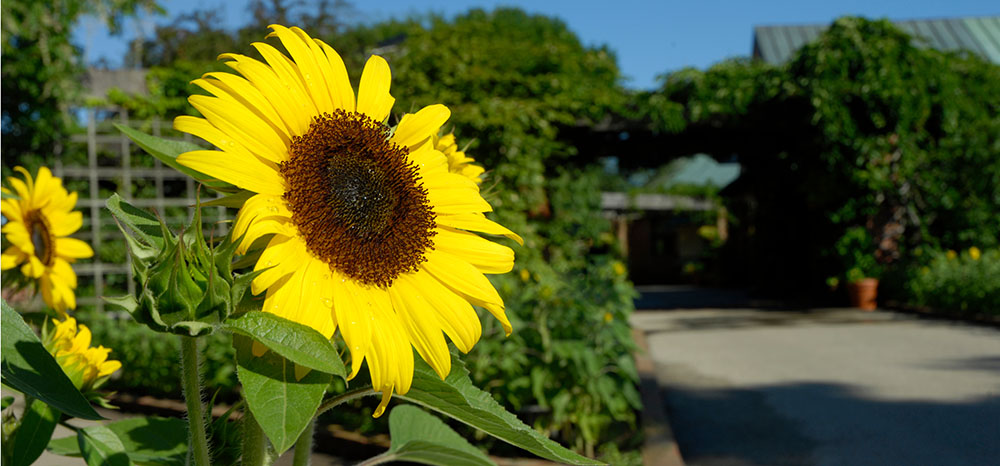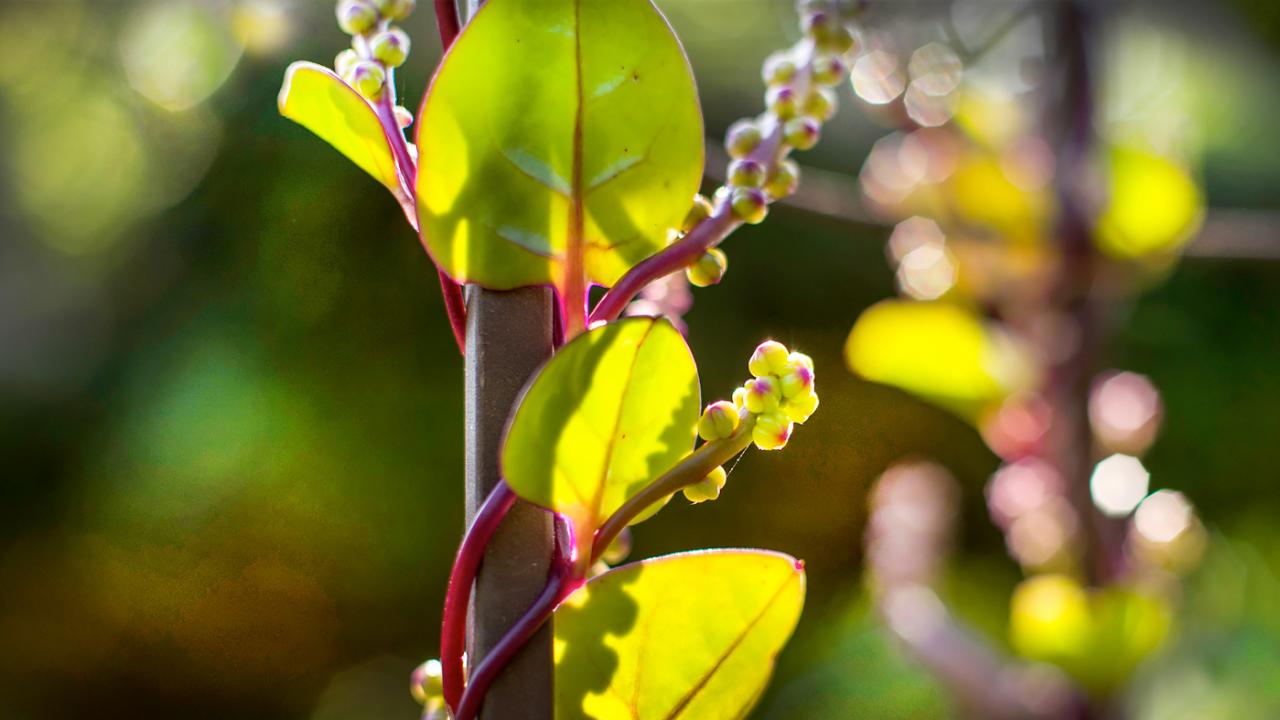

Plants & Gardening
Garden Stories
It’s time to shine for sunflowers
Have you driven past a woodland or prairie lately? Many of these open spaces boast blankets of gold sunflowers, the native plants that for me signal the approach of autumn.
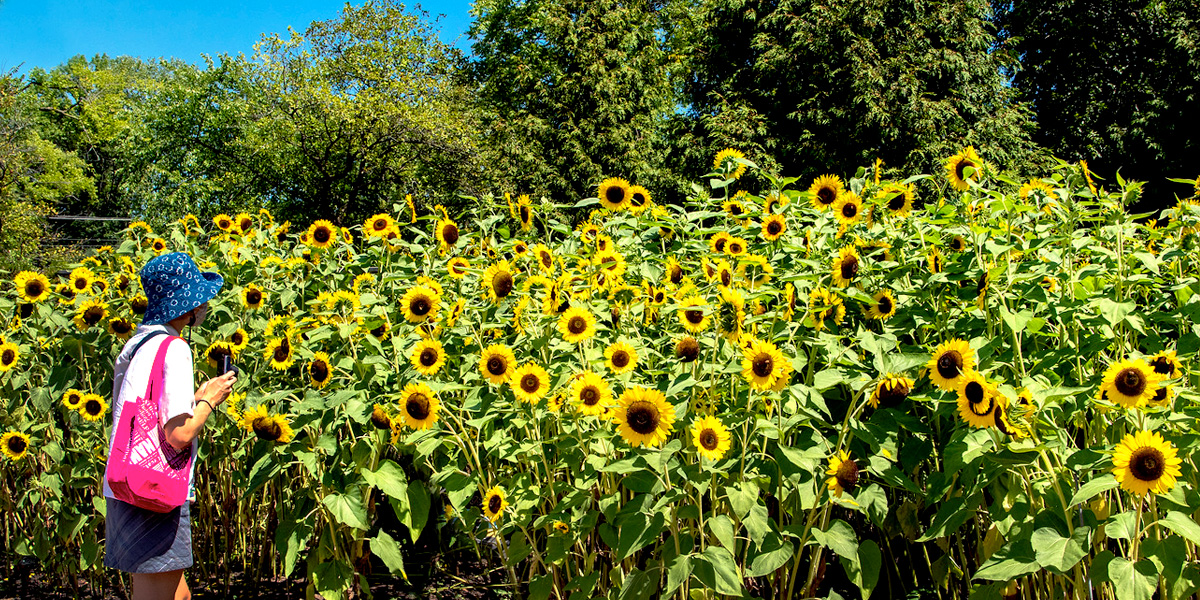
They belong to the Asteraceae family (previously known as the composite family: Compositae) and are perennials. It’s the annual sunflower—Helianthus annuus—that brightens the vegetable garden or borders and occasionally fills a vase or two in the kitchen.
The name Helianthus is derived from the Greek helios for sun and anthus for a flower. Vincent van Gogh paid tribute to their beauty in a series of paintings, and poets including William Blake salute them in their verses. Native Americans cultivated wild sunflowers for their seeds. The Incas bred sunflowers into towering stalks topped by enormous golden flowers and used them for fibers, edible seeds, and as a dye.
Sunflowers are among the easiest annuals to grow from seed. Sow a few seeds of Russian Mammoth outdoors in mid-May and by the end of summer, the plants can tower as tall as 12 feet or more. Give them full sun and water when the soil dries—they even tolerate less-than-fertile soil. Then stand back and wait.
While the blossoms develop, they turn their heads toward the sun, tracking it as it moves across the sky. This unusual behavior is called heliotropism, and it is almost magical. Later, as the flowers grow heavy with maturing seeds, they face east and eventually turn downward.
Each flower or inflorescence is composed of petals—ray flowers—around the edge and disk flowers in the center. Each tiny disk flower forms a seed. A single large flower head contains as many as two thousand seeds. The seeds provide sunflower oil, an important commercial crop, and are a delight to hungry birds (and humans).
Meet the Family
Over the years, breeders have created so many cultivars, a gardener could easily collect more than four dozen different types—from dwarf to ginormous, with flowers that are single or double, and colors that range from yellow with a brown disk to crimson, rust, mahogany, chocolate, pale pink, near white, and golden-yellow with brilliant red tips.
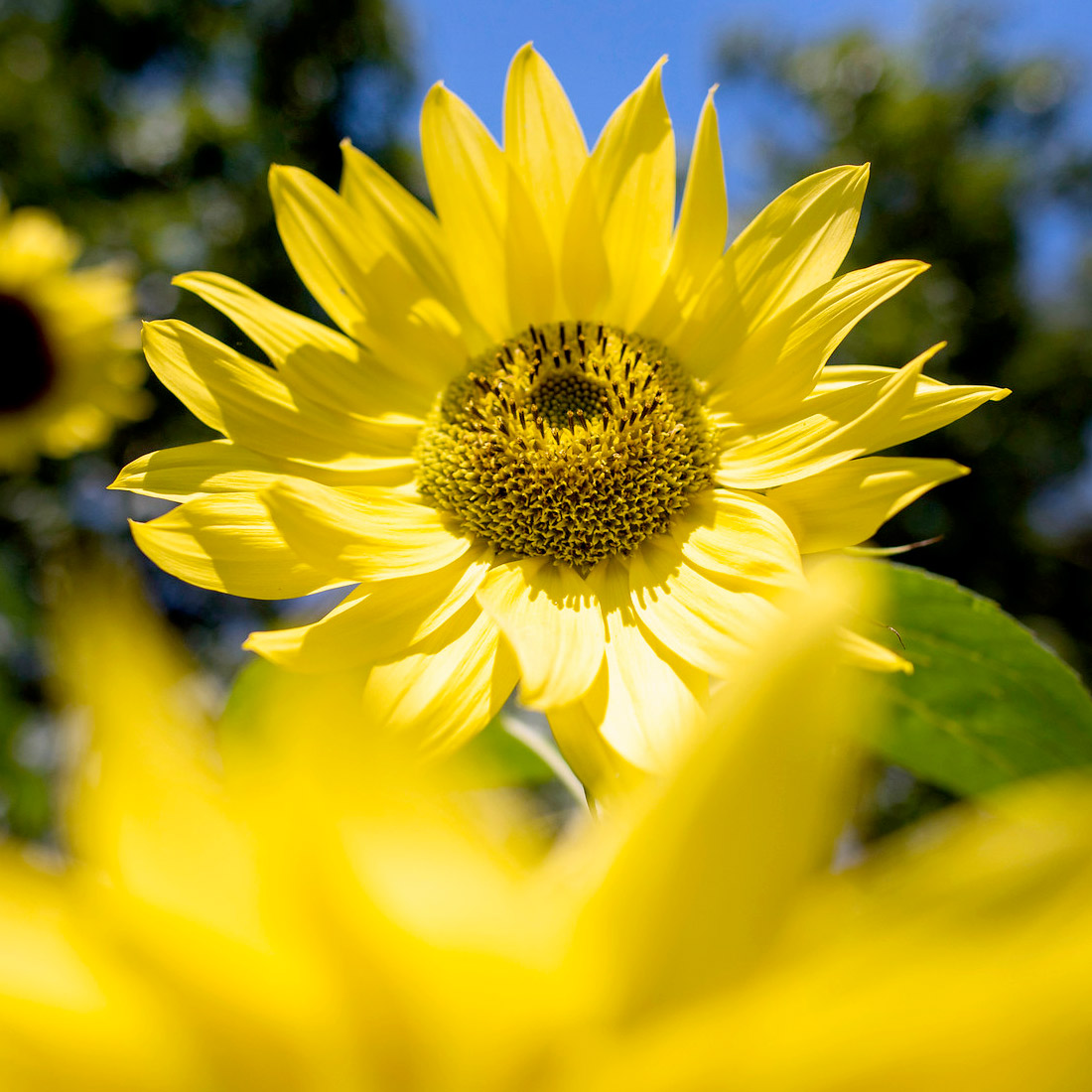
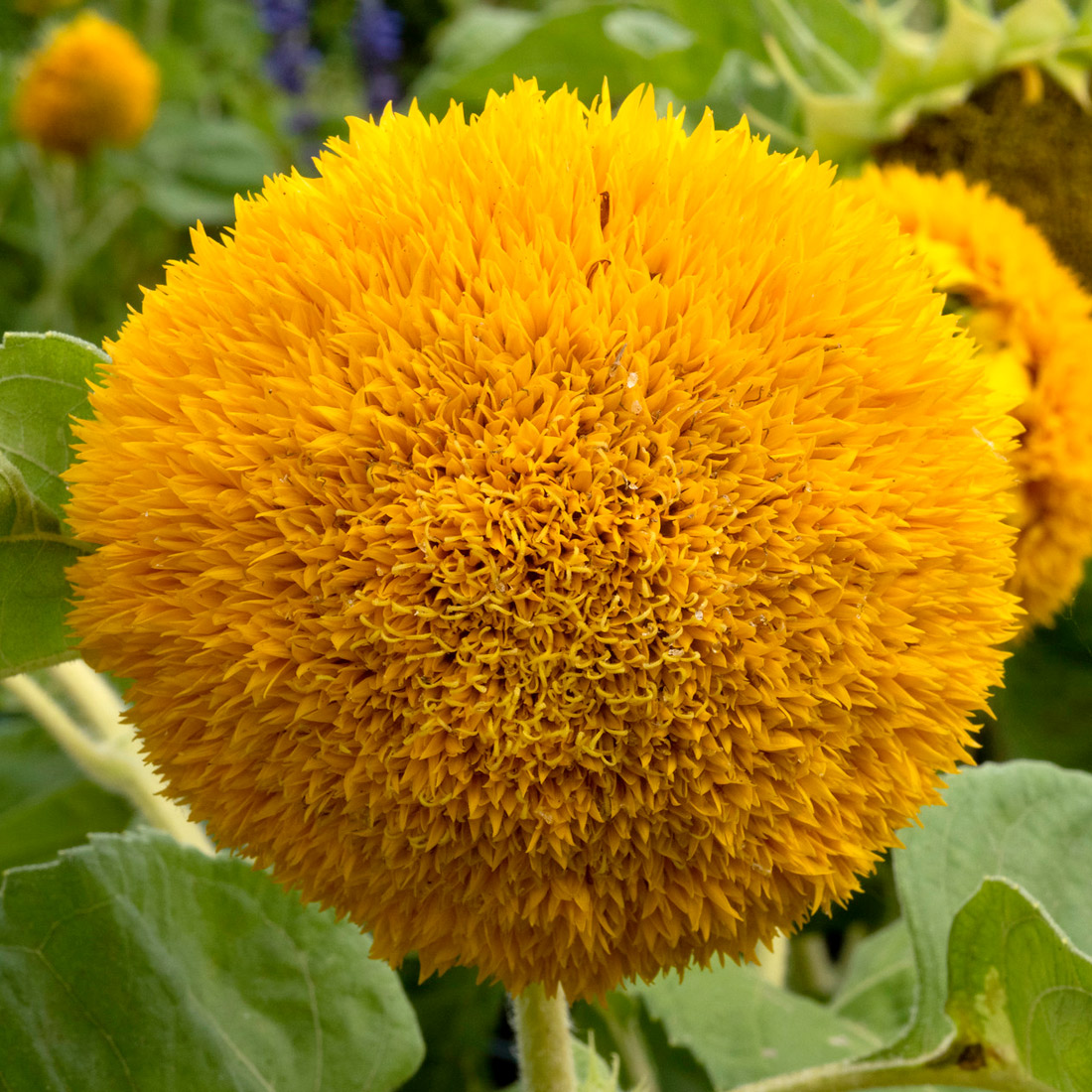
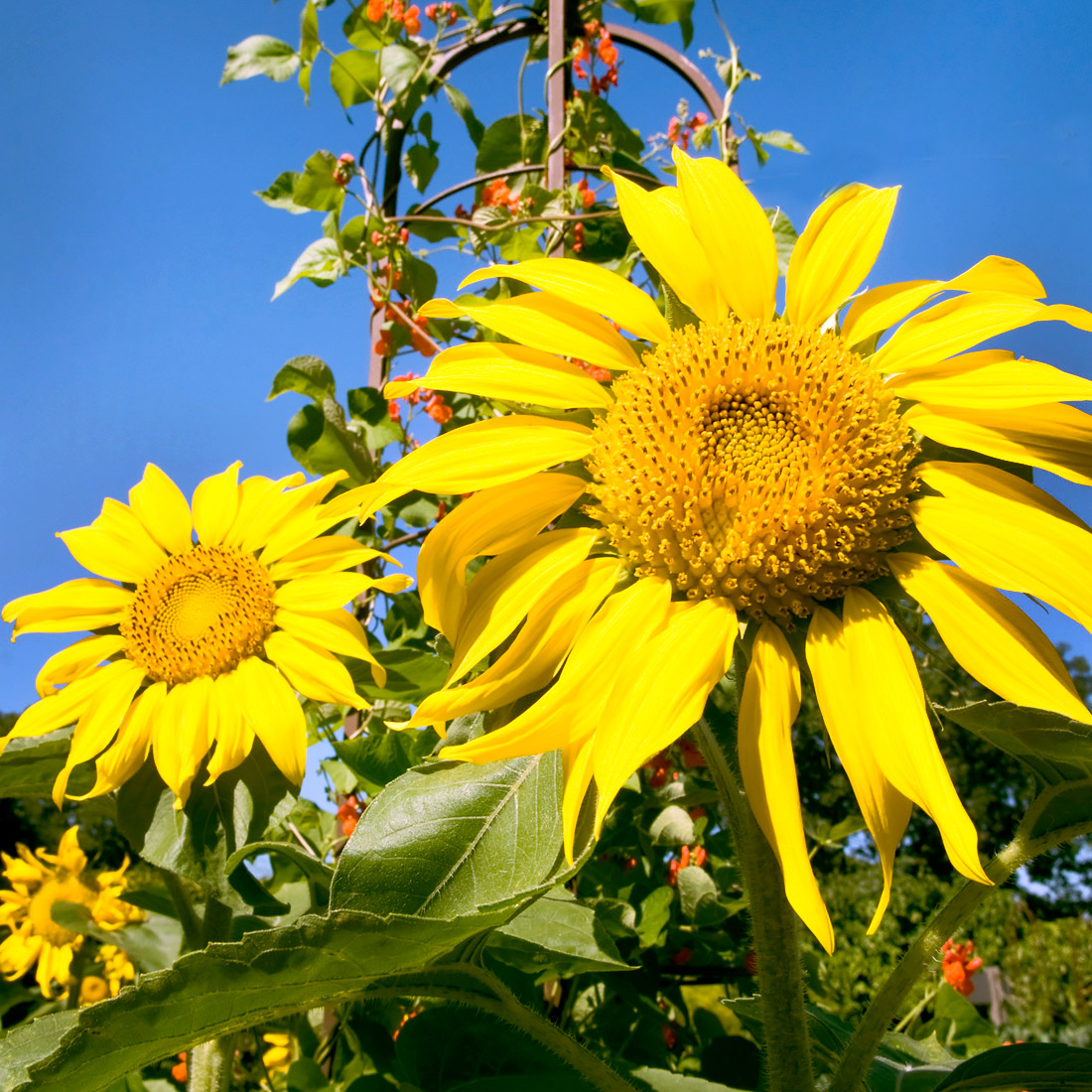
Their names are enchanting
Ring of Fire, Moulin Rouge, Lemonade, Red Hedge, Helios Flame, Elf, and Strawberry Blonde. Some varieties produce their flowers on a single stem and others are branching—displaying multiple flowers on one stem. While Teddy Bear and Golden Bear have massive flower heads that look like big yellow powder puffs, they are more suitable for use as cut flowers than they are for attracting pollinators. Some sunflowers were bred to be pollen-free so that the sticky yellow pollen won’t drop from a vase onto furniture or clothing. Bees visit pollen-free sunflowers because they offer nectar, but what they really want is pollen. That’s something to keep in mind if you want to feed pollinators.
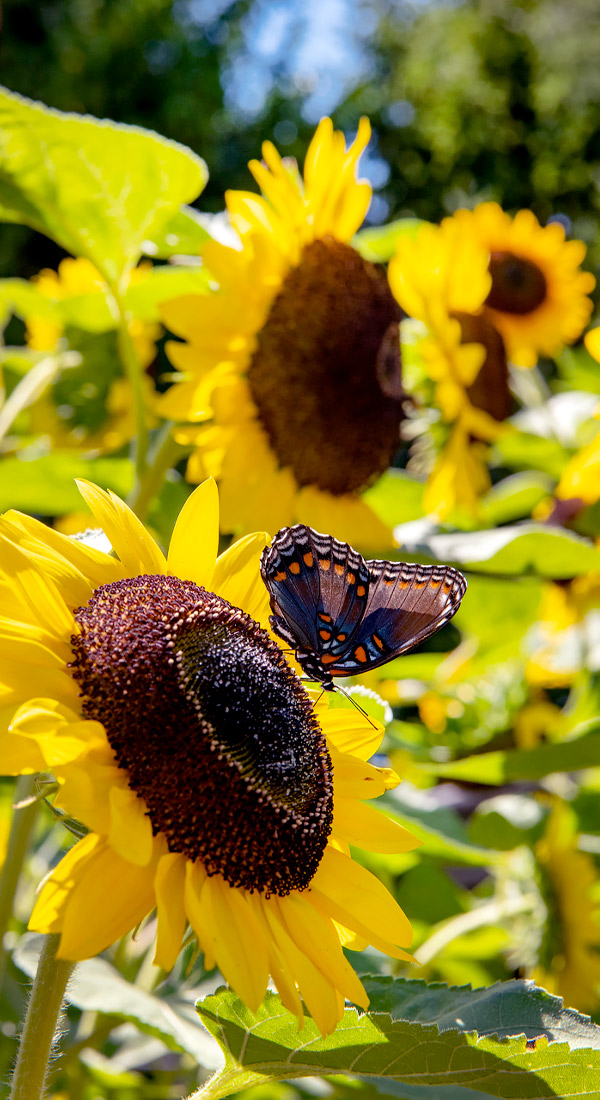
For the Critters
Many sunflowers are left standing once the heads droop. It gives a chance for all of us to watch the antics and acrobatic maneuvers of goldfinches, squirrels, and chipmunks hanging upside down as they feast on the seeds. Cut some of the dried seedheads and place them on a platform feeder, making it easier for other birds to peck at the seeds.
Beyond feeding local garden residents, some of the dried heads can be harvested for use in the kitchen. The seeds have a distinctive nutty flavor and can be eaten raw or roasted. Depending on the weather, the seeds are usually ready for harvest 30 to 45 days after the flower opens.
You might consider where to place a bird feeder filled with sunflower seeds. One study suggests that sunflower shells contain allelochemicals that have a strong inhibitory effect on plant growth. This means they could stunt or prevent the growth of nearby plants. It may just be a coincidence, but a lovely bed of barrenwort (Epimedium) disappeared after a single season spent with sunflower shells on the soil around it. Better idea is to buy sunflower seeds that have the hulls removed. It’s a bit more expensive, but you won’t have to rake up the mess or worry about the plants. And that leaves more time for autumn bird watching.
